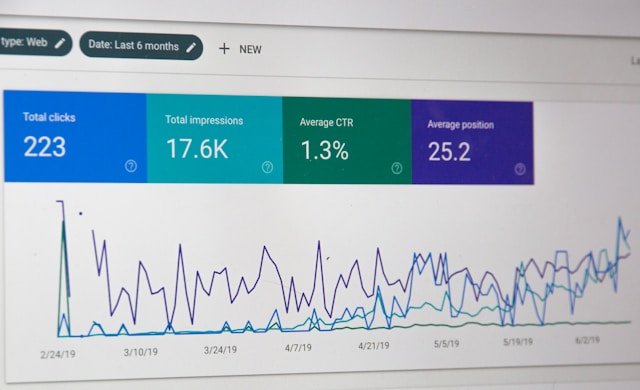Marketing introduces a business to a customer. The website must help that customer take the next step. If the website does not perform well, the business pays to attract interest but loses the opportunity when the customer arrives. We often see businesses focus on ads, SEO or social media before ensuring their website is ready to support decision making. That approach makes marketing feel unpredictable and expensive. The website is where results truly begin.
Marketing momentum relies on the destination being strong enough to earn trust. If someone clicks through and does not feel confident quickly, the moment passes and the visitor disappears. This is why marketing success depends far more on the website than most business owners realise.
Customers Arrive Looking For Confidence
When someone clicks an ad or searches for a local service, they are not researching casually. They already have a problem. They want a solution. They are judging immediately whether the business can provide that solution. The website must prove capability fast. It must show what the business does, how well it does it and why the visitor should choose it instead of competitors.
Visitors do not arrive with patience. They arrive with scepticism. If the value is not clear within a few seconds, they move on. If pricing or process information is unclear, they assume there might be hidden surprises. If images feel generic or outdated, they assume the business might be too. Trust is fragile until proven strong.
Marketing cannot overcome doubt created at the destination. The website must reduce uncertainty, not increase it.
Clear Answers Create Action
Visitors want to feel understood. They want to see their exact situation reflected in the content. This is why clarity drives conversion. For example, a gym offering reformer Pilates must state it clearly rather than hiding it behind generic wording about strength and flexibility. A roofing service must explain whether they repair tiled roofs, metal roofs or both. A physiotherapist must clarify whether they help with sports injuries, chronic pain or post surgery recovery.
When a website speaks in broad categories or vague phrases, visitors are unsure whether the business specialises in their exact need. They prefer certainty. They click the back button and choose someone who states it plainly.
Clear answers reduce hesitation. Reduced hesitation increases enquiries.
Thoughtful Structure Supports Decision Making
The structure of a website shapes how easily a customer moves from interest to enquiry. When the menu is complex or essential information is buried, visitors become frustrated. They may want to know how to contact the business before learning every detail of the service. They may want to view pricing or at least understand cost expectations before committing to a call. They may feel ready to enquire after only a glance at the page, but if the form is hidden below long content, the moment is lost.
We see strong performance when websites:
• Keep navigation simple and descriptive
• Provide clear steps to take action
• Place contact options in multiple visible locations
• Use headings that help visitors scan quickly
• Structure content for decision making, not storytelling
A website should guide the visitor like a well trained staff member would. If someone walked into a physical shop, we would not expect them to wander around hoping to find a checkout. The same logic applies digitally.
Proof Matters More Than Claims
Visitors look for evidence that the business delivers on its promises. This is where many websites fail. They speak confidently about quality but offer very little that proves it. The visitor is expected to trust without validation. Most will not.
Proof can include service outcomes, testimonials, before and after visuals, photos of real projects, professionally presented staff qualifications or even simple case examples. These do not need to be complex or flashy. They need to be real and relevant. Evidence is what makes a business feel like a safe choice.
Marketing becomes stronger when proof appears where the visitor needs reassurance most. That is usually higher on the page than most businesses expect.
Friction Destroys Conversion Quietly
Visitors do not always give feedback when they experience friction. They simply leave. Even the smallest inconvenience can end an enquiry. A slow loading form on mobile. A button that scrolls to the wrong section. A contact number not clickable for phone users. A form that demands unnecessary personal details. A booking process requiring account creation. Each creates just enough discomfort to lose an opportunity.
We often find businesses underestimate how much revenue slips away through tiny, fixable issues. When friction disappears, the website becomes dramatically more effective without needing more traffic.
This is where marketing cost efficiency improves most noticeably.
A Website That Performs Makes Every Channel Better
When the website does its job well, every marketing input becomes more profitable. Paid ads deliver lower cost per enquiry. Organic rankings increase as engagement improves. Social content gains momentum because visitors feel confident to act after clicking through. Even offline campaigns convert better because people check the website to validate the business before calling.
Marketing and website performance are not separate. They are deeply connected. The website determines how much value the business earns from every new person it reaches.
When the destination improves, results scale faster than costs.
Data Shows Exactly Where To Improve
Analytics tell a story. They show where visitors hesitate, abandon or continue. When a page has high exit rates or low scroll depth, the problem is not the marketing that brought people there. It is usually what the visitor saw or did not see after arriving. When we use this information to optimise the customer journey, enquiries rise predictably.
Instead of guessing which changes might work, we can observe real behaviour and respond intelligently. This transforms websites into measurable growth systems rather than static brochures.
Marketing thrives when decisions are driven by performance insight.
Stability Turns Campaigns Into Revenue Streams
A conversion ready website gives a business the confidence to invest in marketing more consistently. Decisions are based on expectation rather than hope. If the business knows that a certain ad budget generates a predictable flow of qualified enquiries, growth becomes planned rather than accidental.
Without stability, businesses pause advertising frequently due to fear of wasting money. That inconsistency prevents momentum. It makes growth unpredictable. It encourages doubt every time results fluctuate.
Websites that are monitored, supported and improved continuously provide the stability businesses need to scale.
Investing In The Destination Is Smarter Than Buying More Traffic
Before spending more on marketing, the business should ensure the website turns current visitors into opportunities. Increasing advertising without improving conversion is like pouring water into a bucket with holes in the bottom. Every loss reduces confidence in the value of marketing, even though the real issue lies elsewhere.
A well performing website allows the business to improve results without increasing spend. This is one of the simplest and most profitable financial advantages a business can capture in its digital environment.
Conversion is the lever that determines whether marketing is cost effective or costly.
Where Marketing Success Really Comes From
The website is not a nice to have. It is the core of the digital experience. It shapes impressions. It guides decisions. It certifies trust. It protects marketing investment. It multiplies outcomes.
Marketing success is built on a foundation. If the foundation is weak, the structure collapses no matter how impressive the effort above it. If the foundation is strong, every improvement stacks neatly and results accelerate with less friction.
Businesses that understand this shift their focus. They do not ask whether marketing is working. They ask whether the website is supporting the decisions marketing creates.
When that balance is right, the business moves forward quickly and confidently. We build the destination first. Traffic becomes the multiplier, not the gamble.
If your website is not delivering enough enquiries, supporting conversion performance will make every marketing dollar work harder and faster for your business.



